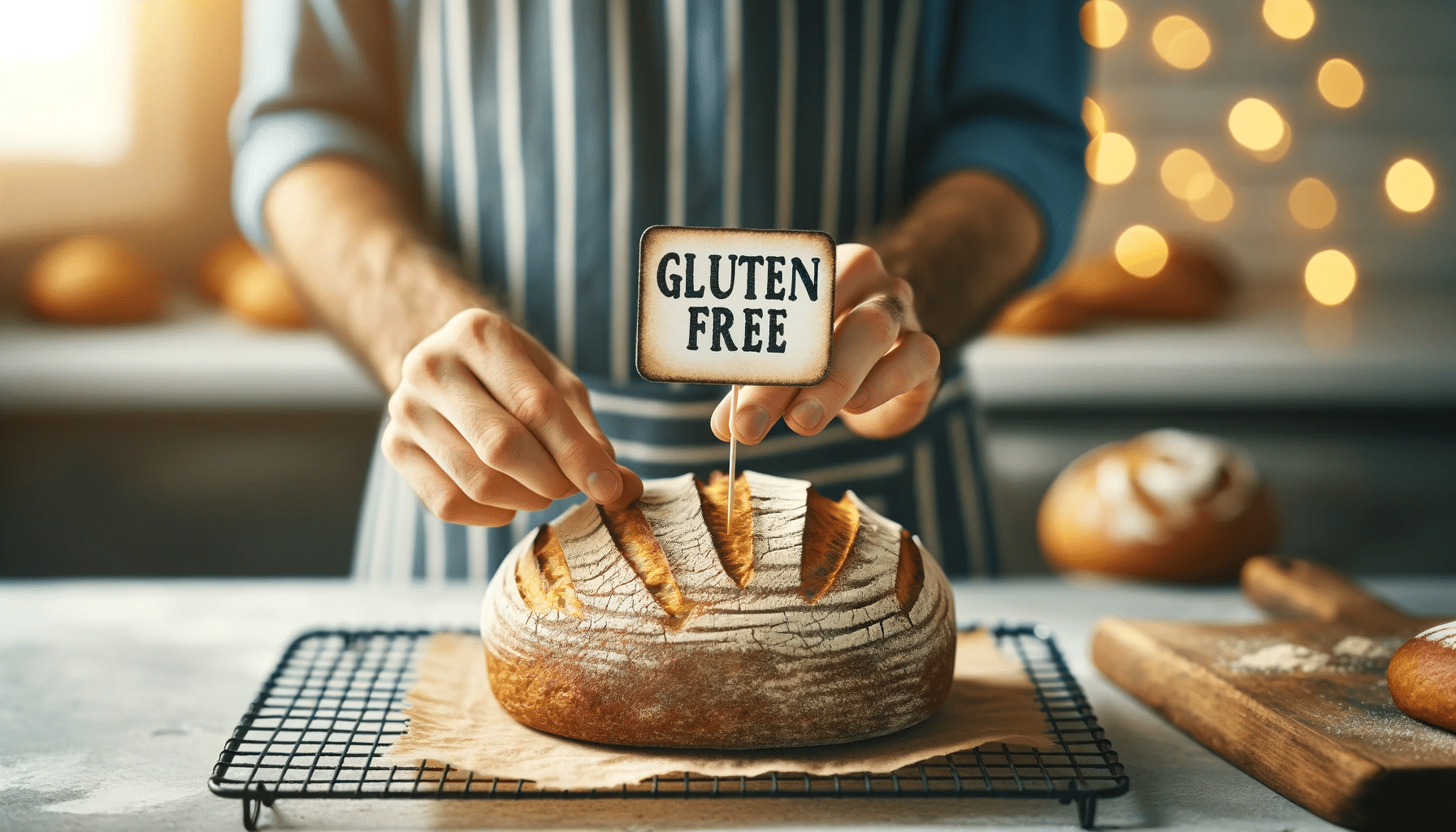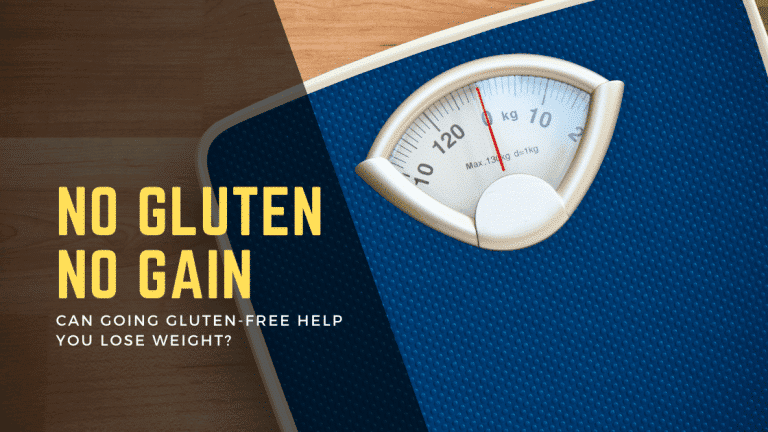How To Start Eating Gluten-Free: My Top 10 Tips For Beginners

Getting diagnosed with celiac disease, non-celiac gluten sensitivity (NCGS), or even a mild gluten intolerance is a real kick to the teeth, let me tell you.
And if you don’t know how to start eating gluten-free, it’s easy to feel totally lost and overwhelmed.
Trust me, I’ve been there. When I was diagnosed with celiac disease and IBS in 2021, I felt like my world had been turned upside down.
But after plenty of trial and error, I’ve now able to keep my symptoms in check and navigate the gluten-free lifestyle effectively.
Here’s my 10 top tips on how you can go gluten-free with ease.
| Tips |
|---|
| 1. Focus on Healthy Eating – Incorporating Whole, Real Naturally Gluten-Free Foods |
| 2. Read Food Labels Carefully |
| 3. Avoid Gluten from Wheat, Barley, Rye & Oats |
| 4. Stock Your Kitchen with Gluten-Free Staples |
| 5. Explore Gluten-Free Products |
| 6. Avoid Gluten Cross-Contamination |
| 7. Connect with the Gluten-Free Community |
| 8. Substitute Gluten-Containing Foods |
| 9. Verify Gluten-Free Dressings and Sauces |
| 10. Transition Slowly to Gluten-Free |
Continue reading to learn more about each tip in detail.
1. Focus on Healthy Eating – Incorporating Whole, Real Naturally Gluten-Free Foods
Fill your plate with nourishing, whole, naturally gluten-free foods like vegetables, fruits, nuts, seeds, eggs and meat.
Stick to nature’s wholesome offerings that don’t contain gluten rather than trying to recreate foods that contain gluten.
Your body will thank you for nutrient-dense produce that is gluten-free rather than processed foods that simply aren’t good for you.
2. Read Food Labels Carefully
Get savvy reading ingredient lists on labels carefully and consistently, especially with packaged goods containing traces of gluten.
Watch for wheat, barley, and rye, as well as sneaky hidden sources of gluten like malt or brewer’s yeast.
Also, watch for the certified gluten-free crossed grain symbol for extra assurance that products don’t have gluten.
3. Avoid Gluten from Wheat, Barley, Rye & Oats
These four gluten-containing grains found in bread contain gluten proteins that people with celiac disease or gluten sensitivity cannot tolerate, so steer clear completely in all forms.
Oats are a particularly tricky one, as they don’t naturally contain gluten. However, they can come into contact with gluten-containing grains during manufacturing. Please opt for versions specifically labelled ‘gluten-free’.
Remember hidden gluten sources like soy sauce, broths, salad dressings and sauces, which often secretly house these gluten-containing ingredients.
4. Stock Your Kitchen with Gluten-Free Staples
Having the right gluten-free ingredients on hand makes eating gluten-free and following the diet much easier to stick to long-term.
Stock up your kitchen with versatile gluten-free flours, starches, baking goods, oils, vinegars, seasonings, snacks and pantry staple foods like gluten-free bread, pasta, cereal and crackers.
5. Explore Gluten-Free Products
The variety of packaged gluten-free products available now is amazing – from breads to desserts, pastas to crackers, and so much more.
Get familiar with brands of foods you like that feature a gluten-free label (otherwise known as the universal ‘cross-grain’ symbol.
Taste and textures have advanced tremendously beyond the crumbling hockey pucks of yesterday for those wanting to eat gluten-free!
6. Avoid Gluten Cross-Contamination
You must avoid all cross-contact at home between gluten-containing and gluten-free foods via hands, tools, and cooking surfaces.
When eating out, look out for shared areas and fryer oil too – and don’t be afraid to ask questions, as it’s far better to be safe than sorry!
For those sensitive, cross-contamination with even small amounts of gluten can causes serious issues, so educate yourself on proper kitchen protocols.
Not sure how to do that? Check out my guide on how I avoid cross-contamination as a celiac.
7. Connect with the Gluten-Free Community
Connect online or locally with others who are on the same journey. It’s an easy way to get emotional support, recipe ideas and product tips.
Those already living fully gluten-free can accelerate your learning curve tremendously with wisdom from their experience.
Having navigated the gluten-free journey since 2021, I like to think I’ve got a good grip on it all by now.
Please check out my other handy guides, including:
- How to Make Your Home a Gluten-Free Zone
- How to Know if Something is Gluten-Free
- Does Gluten-Friendly Mean Gluten-Free?
8. Substitute Gluten-Containing Foods
When first transitioning your diet gluten-free, swap former gluten products for direct gluten-free alternatives before exploring greater complexity.
Substitute bread, pasta, baked goods etc. with equivalent gluten-free versions labeled “gluten-free” as you get the hang of things.
9. Verify Gluten-Free Dressings and Sauces
Ingredients like malt vinegar, soy sauce and salad dressings often secretly contain traces of gluten.
Either verify food labels carefully or stick with oils and basic seasonings while getting your gluten-free footing.
No need to get fancy yet!
10. Transition Slowly to Gluten-Free
Adjusting to a gluten-free diet will take some time and patience!
Set mini goals working through each step slowly as you remove gluten from your meals.
First, focus on stocking gluten-free kitchen basics, then label reading skills, then safe cooking without gluten, and finally, branching into more variety and substitutions.
How to Start Eating Gluten-Free – Making A Fresh Start
The key when initially transitioning to eating gluten free is crowding out gluten sources with naturally gluten-free whole foods, controlling your environment and asking for help when needed with this major diet change.
Simultaneously keep an open, positive mindset and take baby steps.
Living fully and happily 100% gluten-free IS possible and gets easier every day as your knowledge expands!
Disclaimer: This content is based on my personal experience as an individual diagnosed with celiac disease and IBS (Irritable Bowel Syndrome) who follows a strict gluten-free diet. This does not constitute medical advice. Please consult a medical professional, nutritionist, or qualified dietitian for personalized, professional advice.






